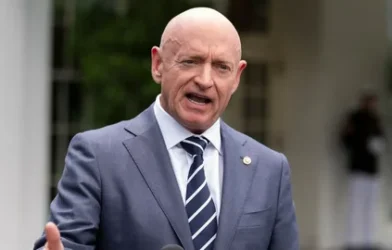Introduction
For decades, students across the United States were challenged by a series of physical activities under the banner of the Presidential Fitness Test. Designed to encourage youth fitness and health, the test became a familiar and often anxiety-inducing part of American school life. Although it was officially phased out in 2013, the legacy of the test still sparks strong memories and debates about physical education, body image, and national health goals.
What Was the Presidential Fitness Test?
The Presidential Fitness Test was a standardized physical fitness assessment used in American public schools. It aimed to measure the overall physical fitness of students, primarily from elementary through high school. The program began in 1966, though its roots date back to the 1950s, during a time when the U.S. government was becoming increasingly concerned about the physical health of American youth.
The test was created under President Lyndon B. Johnson’s administration and was overseen by the President’s Council on Physical Fitness and Sports. The council believed that a fit youth population would lead to a stronger, more capable nation, both physically and mentally.
Components of the Test
The test consisted of a series of exercises meant to evaluate strength, endurance, flexibility, and agility. The typical components included:
-
One-mile run or walk to assess cardiovascular endurance
-
Sit-ups or curl-ups to measure abdominal strength
-
Pull-ups or flexed-arm hang to test upper body strength
-
Sit-and-reach for flexibility
-
Shuttle run to assess speed and agility
Each event was scored based on performance benchmarks, with the top-performing students receiving the Presidential Physical Fitness Award. Those who did well but did not meet the top criteria could earn a National or Participant Award.
The Goals Behind the Program
The main objective of the test was to promote lifelong physical fitness and a sense of national pride in maintaining good health. Students were encouraged to improve their scores year after year, and schools often dedicated weeks to preparation and training. By rewarding achievement and effort, the program aimed to instill healthy habits from a young age.
The test also served as a national gauge to monitor the overall physical fitness level of American youth. Lawmakers and educators believed that by setting a high standard, students would be inspired to meet it.
Criticism and Controversy
While the intention behind the Presidential Fitness Test was positive, the execution and impact were often criticized. Many students found the test stressful or embarrassing, especially those who struggled with physical activity. The focus on performance over progress led some to feel singled out or ashamed, particularly if they could not complete tasks like pull-ups or the mile run within certain times.
Additionally, critics argued that the test did not account for individual differences in body type, fitness background, or ability. It also lacked a developmental or educational component, meaning students were often tested without adequate training or context.
By the early 2000s, more educators began questioning whether the test was truly promoting lifelong fitness or simply reinforcing athletic achievement in already active students.
The End of the Program
In 2013, the Presidential Fitness Test was officially retired and replaced by the Presidential Youth Fitness Program. The new initiative shifted the focus from competition and comparison to personal progress and health-based fitness education.
Rather than awarding the fittest students, the updated program emphasizes improvement, goal setting, and helping students understand the importance of staying active throughout their lives. Fitness assessments are still conducted, but with more supportive and individualized approaches.
Lasting Legacy
For many Americans, memories of the Presidential Fitness Test remain vivid. Whether it was the feeling of accomplishment after completing the mile run or the frustration of hanging from a bar during the flexed-arm hang, the test left a mark on generations of students.
The broader legacy of the test includes both positive outcomes and valuable lessons. It succeeded in placing youth fitness into the national conversation and sparked important discussions about how to encourage healthy habits. At the same time, it revealed the need for more inclusive, thoughtful approaches to physical education.
Conclusion
The Presidential Fitness Test was a unique chapter in American education and public health history. While no longer in use, it continues to be remembered, debated, and referenced in pop culture and educational discussions. Its replacement reflects a more modern understanding of health and development, aiming to build fitness habits that last a lifetime—without the stress of public performance.
Whether remembered fondly or with dread, the test symbolized a time when fitness was not only a personal goal but also a matter of national pride.













Comments are closed